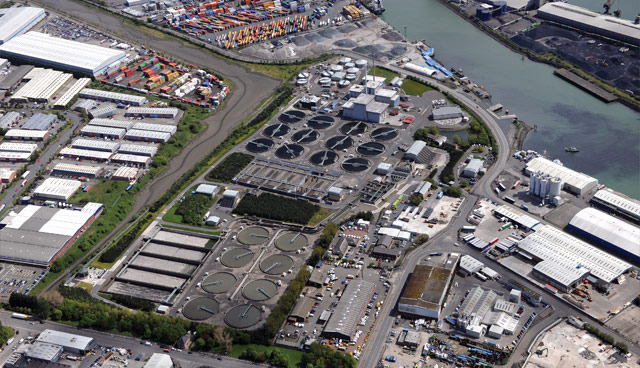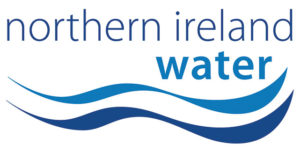Drains before cranes

NI Water Chief Executive Sara Venning discusses the challenges for water and wastewater infrastructure and the significant investment needed to enable economic growth and protect the environment.
The Business and Industry Advisory Committee to the OECD has previously commented that “water is as essential to human activity as air. Health care, education, economic production and social activity depend on it. When cities or societies neglect water, they face collapse.”
NI Water delivers essential water and wastewater services across Northern Ireland through a vast £10.5 billion asset base. The water side of the business has 24 impounding reservoirs collecting and feeding raw water into 23 water treatment works and on average 570 million litres of treated water is pumped every day to households and businesses via 370 service reservoirs and over 26,000km of water mains pipes. On the wastewater side, NI Water collects over 340 million litres per day via almost 16,000km of sewers; it treats the wastewater at over 1,000 wastewater treatment works and returns it safely to the environment.
NI Water’s Chief Executive Sara Venning explains: “We have made great progress in improving our business over the last number of years, we’ve delivered our best ever drinking water quality in 2017 and wastewater compliance has remained at near record levels. But 2018 has highlighted that lack of capacity in these vital networks will likely become a significant issue sooner rather than later. Remember the heatwave in July? Whilst stocks of raw water remained sufficient, the hot weather increased the demand for treated water by over 25 per cent and the water treatment works struggled to produce enough treated water to supply into the network to meet the increase.
“Thanks to the cooperation of households and businesses in reducing their water use and the efforts of NI Water’s staff, we were able to keep treated water flowing to everyone, avoiding water outages and rotating water supplies from area to area. However, climate change experts are predicting that hot, dry summers are likely to be much more frequent in future years.”
Drains before cranes
Venning continues: “But it’s the wastewater side of the business that is coming under more immediate pressure, especially old combined sewers. In 2011, the Water Services Regulation Authority (OFWAT) published a report on the challenges ahead for sewerage systems. It determined that the volume of wastewater in combined sewers will increase by around 50 per cent by 2040 due to:
- climate change, because warmer air holds more moisture leading to more intense rain storms;
- population and business growth, with more building on green land and increased densification, and
- urban creep, where people extend their house, build conservatories or convert gardens into parking.
“Sewer systems have a finite capacity and most of our sewer pipes and wastewater treatment works were laid or built decades ago, in fact circa 70 per cent of sewer pipes are over 50 years old. However, over the last 50 years or so Northern Ireland’s population has grown by over 20 per cent, from 1.54 million to 1.87 million, and over the last decade water and wastewater hungry business sectors such as agri-food manufacturing and tourism have undergone significant growth. Added to this is the impact of climate change over recent years with more frequent periods of heavy rainfall and snowmelt.

“NI Water has over 1,000 wastewater treatment works across Northern Ireland, each treating wastewater collected and pumped through sewer pipes from its local catchment area. The volume of wastewater that can be managed in each of these catchment areas is dependent on the capacities of its sewer pipes, sewer mains, pumping stations and its wastewater treatment works. Currently 70 of the 250 largest wastewater treatment works have either reached maximum capacity or are fast approaching it and NI Water is unable to accept new sewer connections for new housing or business growth in many of these areas. Whilst 10 of these wastewater treatment works will be upgraded by 2021 as part of NI Water’s six year PC15 Regulated Business Plan, other wastewater treatment works are likely to join this list as Northern Ireland’s population, business and tourism continue to grow and climate change delivers more extreme rainfall incidents.
Belfast’s Living With Water Programme
The Chief Executive adds: “The list of those approaching capacity includes NI Water’s largest wastewater treatments works serving Belfast. Commissioned over 20 years ago, the Belfast Wastewater Treatment Works is currently operating at circa 97 per cent of its maximum capacity and requires every part of the works to be kept running. The impact is that as parts of the works wear and need replaced we cannot take these parts off line without risking the compliance standards needed to safely return treated wastewater to the environment. Significant investment in Belfast is needed to enable continued new connections to the sewer network from 2021.
“However, there is some good news. Due to the sheer scale of the drainage and wastewater challenges facing Belfast identified during the PC15 Regulated Business Plan process, the Living With Water Programme, with its board drawn from DfI, DAERA, DoF, Utility Regulator, SIB, NI Water, DfI Rivers, DfI Roads, NIEA and Belfast City Council, was established in 2015; it aims to develop a strategic drainage infrastructure plan for Belfast to protect against flood risk, enhance the environment, provide the increased drainage and wastewater capacity necessary to enable the economy to grow and to secure funding outside of NI Water’s Regulated Business Plan and tariff processes.
“And as NI Water is now entering the development of its next six year PC21 Regulated Business Plan together with DfI and the Utility Regulator, there is the opportunity for the required funding needed for wastewater catchments outside of Belfast to be made available to NI Water.”
Venning concludes: “The recent TV series ‘Ulster Giants’ highlighted how historical investment in infrastructure has provided essential, often unseen, foundations that underpin the economy of Northern Ireland. One of the challenges ahead is to prioritise a significant increase in the level of investment in drainage and wastewater treatment to enable the economy to continue to grow, protect against flooding and enhance the environment. At a recent conference in Belfast, Richard Kirk, NI Regional Director of the Institution of Civil Engineers, summed this up well, stating, ‘If you want to put up the cranes you have to invest in the drains’.”






